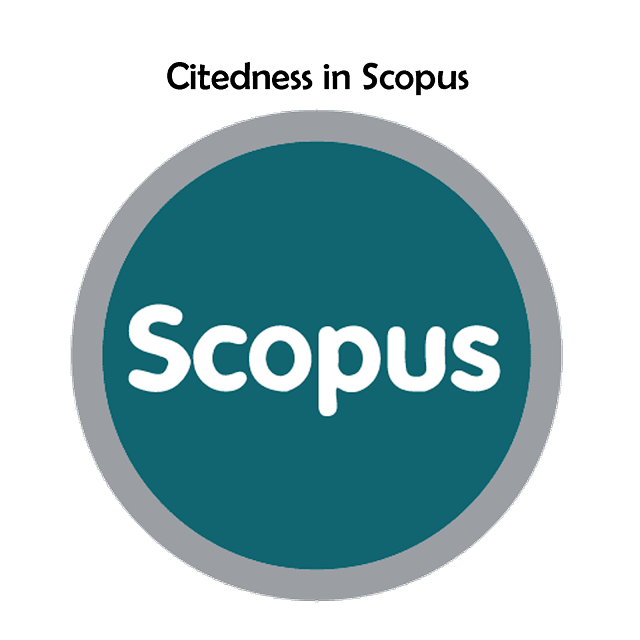THE APPLICATION OF THE DICTOGLOSS TECHNIQUE TO IMPROVE STUDENTS' ACHIEVEMENT IN LISTENING COMPREHENSION
DOI:
https://doi.org/10.37249/assalam.v6i1.356Keywords:
Dictogloss Technique, Comprehension, ListeningAbstract
Listening comprehension plays the most crucial role in building communication skills. However, students always think it is challenging to listening lessons. And the reason is that sometimes they are bored and not interested in the material. In addition, inappropriate methods and techniques may cause students to lack interest and motivation to learn. The author is interested in conducting research with the dictogloss technique to overcome the difficulties faced by students in learning activities. The purpose of this study was to determine the learning process of listening comprehension and to find out the advantages of the dictogloss technique in class X IPA 1 at MAN Pegasing. This study uses classroom action research, data collection techniques using pre-test and post-test, and questionnaires to determine the advantages of the dictogloss technique. The results of this study indicate that the dictogloss technique effectively improves student achievement in listening comprehension at MAN Pegasasing. Furthermore, the students agreed that the dictogloss technique is one of the exciting techniques and can improve student achievement in listening.
Downloads
References
Agarwal, M. (2008). Remedial English language. Meerut, India: Krishna Publication.
Brown, G., & Yule, G. (1983). Teaching the spoken language: An approach based on the analysis of conversational English. Cambridge: Cambridge University Press.
Brown, H. D. (2001). Teaching by Principles: An Interactive Approach to Language Pedagogy, a second edition. New York, NY, USA: Longman.
Elahifar, M., Ebrahimi, F., and Aziz, Z. (2022). Listening Activity for Listening Comprehension Development of EFL Learners. Education Research International, (2022), Article ID 3016643, 9 pages.
https://doi.org/10.1155/2022/3016643
Floyed, J. (1985). Listening a practical approach. Glenview, Illinois: Scott Foreswan and Company.
Gall, M. D. (2003). Educational Research. Sydney: Pearson Educational.
Ghassan, Husseinali. (2013). Using Dictogloss to Advance Proficiency and Accuracy in Teaching Arabic. Dimension, 2013, 46-58.
https://eric.ed.gov/?id=EJ1211103
Hargie, O. (2010). Skilled interpersonal communication: Research, theory and practice (5th Ed.). New York: Routledge.
Hasnah,Y., Ginting, P., Dewi, R, S,. (2020). Ametta Learning Model Design (Active, Fun And Without Pressure). Jurnal Tarbiyah, 27(2), 113-129.
http://dx.doi.org/10.30829/tar.v27i2.773
Jacobs, G.M., & Small, J.J. (2003). Combining Dictogloss and Cooperative Learning To Promote Language Learning. The Reading Matrix: An International Online Journal, 3(1), 1-15.
J. K. Rubin. (1994). A review of second language listening comprehension research. Modern Language Journal, 78(2), 199–221.
https://www.academia.edu/1253270/A_review_of_second_language_listening_comprehension_research
John, N. M.(1984). Teaching Language Arts Classroom Applications. New York: McGraw Hill.
Kemmis, S. & Mc. Taggart, R. (1988). The Action Research Planner. Victoria: Deakin University Press.
Kianiparsa, P., & Vali, S. (2010). The Effect of grammar learning on speaking ability of EFL learners. ELT Weekly, 2(53), 7-15.
Lim, W.L. and Jacobs, G. M. (2001). An analysis of students' dyadic interaction on a dictogloss task. ERIC Document Reproduction Service No. ED 456 649.
Marashi, H., and Khaksar, M. (2013). Dictogloss Or Dicto-Phrase: Which Works Better For Listening Comprehension?. i-manager's Journal on English Language Teaching, 3(1), 22-29.
http://dx.doi.org/10.26634/jelt.3.1.2147
Margosono, S. (2013). Metodologi Penelitian Pendidikan. Jakarta: Rineka Cipta.
Mendelsohn, D. J. (1994). Learning to Listen: A Strategy-Based Approach for the Second Language Learner, San Diego. CA, USA: Dominie Press.
Modi, D. J. (1991). Construction and standardization of listening comprehension test. New Delhi: Mittal Publications.
Nabei, T. (1996). Dictogloss: Is it an effective language learning task?. Working Papers in Educational Linguistics, 12(1), 59-74.
https://repository.upenn.edu/wpel/vol12/iss1/4
Nation, I. S. P., & Newton, J. (2009). Teaching ESL/EFL listening and speaking. New York: Routledge.
Noordin, N., Shamshiri, K., & Ismail A. (2012). Effects of task difficulty in listening comprehension. In N. M. Seel (Ed.) Encyclopedia of the sciences of learning (pp. 1093-1095). New York: Springer.
Nunan, D. (2003). Listening in a Second Language. The Language Teacher, Retrieved February 2, 2010, from http://www.jaltpublications.org/old_tlt/articles/2003/07/nunan
Page, R. M., & Page, T. S. (2011). Promoting health and emotional well-being in your classroom. Canada: Jones & Bartlett Publishers.
Richards, J, C.(2008). Teaching Listening and Speaking. New York: Cambridge University Press.
Rost, M. (1994). Introducing Listening. London, UK: Penguin Books.
Sanjaya, Wina. (2013). Penelitian Pendidikan. Jakarta: Kencana Prenada Media Group.
Saragih, M,. and Utami, R. (2020). ImprovingStudents' Motivation in Learning English Through Cooperative Learning Strategy by Using Media. Globish (An English-Indonesian journal for English, Education and Culture), 9(1),21-26.
DOI: http://dx.doi.org/10.31000/globish.v7i2
Storch, N. (1998). A classroom-based study: Insights from a collaborative reconstruction task. ELT Journal, 52(4), 291-300.
https://doi.org/10.1093/elt/52.4.291
Sudijono, Anas. (2007). Pengantar Statistik Pendidikan. Jakarta: Raja Grafindo Perseda.
Swain, M. & Miccoli, L. S. (1994). Learning in a content-based, collaboratively structured course. The experience of an adult ESL learner. TESL Canada Journal, 12(1), 15-28.
https://doi.org/10.18806/tesl.v12i1.641
Swain, M. & Lapkin, S. (1998). Interaction and second language learning: Two adolescent French immersion students working together. The Modern Language Journal, 82, 320-337.
http://dx.doi.org/10.1111/j.1540-4781.1998.tb01209.x
Swain, M., & Lapkin, S. (2001). Focus on form through collaborative dialogue: Ex¬ploring task effects. In M. Bygate, I. Skehan, & M. Swain (Eds.), Researching pedagogic tasks: Second language learning, teaching and testing (pp. 98-118). London, UK: Longman
.Thornburry, S. (1997). Reformulation and reconstruction: Tasks that promote 'notic¬ing'. ELT Journal, 51(4), 326-335.
https://doi.org/10.1093/ELT%2F51.4.326
Tyagi, K., & Misra, P. (2011). Basic technical communication. New Delhi: PHI Learning.
Vasiljevic, Zorana. (2010). Dictogloss as an Interactive Method of Teaching Listening Comprehension to L2 Learners. English Language Teaching. 3(1), 41-52. . http://dx.doi.org/10.5539/elt.v3n1p41
Verderber, R. F., Verderber, K. S., & Sellnow, D. D. (2011). Comm2. Boston, MA: Cengage Learning
Wajnryb, R. (1986). Grammar workout: The Dictogloss Approach, Listening Text Reconstruction Analysis. Sydney: Melting Pot Press.
Wajnryb, R. (1990). Grammar dictation. Oxford: Oxford University Press.
Wajnryb, R. (1995). Grammar dictation. Oxford: Oxford University Press.
Downloads
Published
How to Cite
Issue
Section
License
Copyright (c) 2022 Khairun Niswa, Muhammad Hasyimsyah Batubara, Nasyupit Nasyupit

This work is licensed under a Creative Commons Attribution-ShareAlike 4.0 International License.










.png)




